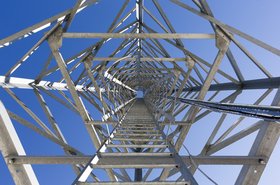Drones are becoming big business. The use of unmanned aerial vehicles (UAVs) is predicted to see huge increases as their legitimate function within enterprise environments such as agriculture, construction, media and law enforcement deliver significant operational benefits. But the expected growth of drones, given by one source to be as much as 67 percent CAGR over the next few years, will not be without its security drawbacks.
As drone use grows, so too does the potential to cause massive disruption when their application is put to more nefarious purposes. In 2018 the UK’s Gatwick Airport was closed for 33 hours, resulting in the cancellation of 1000 flights and affecting more than 140,000 passengers over the busy Christmas period. Despite a lengthy police investigation, the definite presence of a drone or multiple drones at the site could not be verified, despite multiple eyewitness accounts.
The helplessness of police and security personnel highlighted a very real problem. Traditional perimeter protection methods comprising physical barriers as well as advanced technologies were effectively bypassed by a drone, available for as little as £200, and costing the aviation industry millions. The security and incident response team’s limp outcome was mainly due to a lack of ability to detect and verify the presence of aerial devices in good time. But when one thinks of the possible payloads that drones are capable of carrying, ranging from a camera to conduct hostile reconnaissance, to equipment designed for hijacking a wi-fi signal to disrupt software and systems, or even a biological weapon, the issue is brought into very sharp focus.
Detect, identify and locate
As data centers increasingly provide the infrastructure for our modern way of life, monitoring operations and guaranteeing high levels of security is a critical capability. Personnel are under growing pressure to guard against threats both physical and cyber in nature. Any disruption to operations could prove catastrophic, with periods of downtime having significant cost implications and causing massive disruption to the people and businesses that now rely so heavily on a seamless transfer of data.
And while the data center has become infinitely more secure in recent years, being wise to new threats is the key to being one step ahead. Modern network-enabled systems bring considerable advances to perimeter protection capabilities on the ground incorporating video surveillance cameras, thermal cameras and radar to track intruders’ movements; and inside, cameras and sensors placed inside server rooms serve to detect and deter criminal activity. But the new threat may now come from the skies above.
The use of dedicated software to complement network-enabled physical security solutions now allows drones to be detected based on the radio frequency (RF) signals that they emit. This can be used to identify the make and model of more than 200 drones, including commercial, hobbyist and DIY, even pinpointing the location of the operative. Far more powerful than relying on the eyes and ears of security personnel alone, this technology can provide data center operatives with advanced warning of a drone approaching and early indications of its intent.
Drone analysis and threat mitigation
Once detected, it’s important to establish the reason for a drone’s presence. Data centers typically operate a no-fly zone, so security officers or police need to be able to very swiftly establish the difference between a careless drone pilot and a threat actor involved in malicious endeavour. By pinpointing a drone and detecting the signals given out by its operator’s equipment, security personnel can be dispatched to have a conversation with the pilot. In genuine cases of misunderstanding there may be a need for improved signage, the use of network audio speakers to issue pre-recorded audio messages or alerts, or other means of communicating that the location is out of bounds to aerial vehicles and devices, making it clear that drone operators will be challenged.
Of course, where an incident is verified, swift identification is imperative to aid early decision making. Drone detection software, capable of sending a signal to a PTZ (pan/tilt/zoom) camera can be used to lock-on to and track the movements of a drone, with crystal clear imagery used to ascertain the substance of its payload to distinguish friend from foe.
Drone use promises much when in the right hands, but as with many things, we should be wise to its pitfalls.
With a drone detection solution in place, the skies around the data center can be monitored as successfully as the ground. Integration with existing video management systems (VMS) also means that a drone detection solution can be part of an overarching and integrated system to improve security posture and ensure a smarter, safer world for all.





